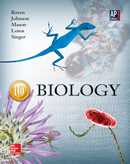1 A) alleles. B) phenotypes. C) genotypes. D) prototypes. E) paratypes. 2 A) They occur in pairs on homologous chromosomes. B) They separate when forming gametes. C) They reoccur in pairs at fertilization. D) They can be exactly the same or represent alternate phenotypes. E) All of the choices are correct. 3 A) bb. B) Bb. C) BB. D) None of these above represent her genotype. E) Not able to determine from the information given. 4 A) homozygous B) heterozygous C) sex-linked D) male E) female 5 A) both homozygous recessive. B) both homozygous dominant. C) both heterozygous. D) one homozygous dominant, one homozygous recessive. E) You would never expect this percentage of a phenotype given any known mode of inheritance. 6 A) Tt x Tt B) TT x TT C) tt x tt D) Tt x tt E) None of the choices are correct. 7 A) epistasis. B) linked genes. C) simple dominance. D) multiple alleles. E) polygenic inheritance. 8 A) A or O only B) B or O only C) A or B only D) A, B, AB only E) A, B, O, or AB 9 A) He could not have observed segregation of traits. B) He would have to create F1 heterozygotes from two different sets of parents prior to the crosses. C) He would not have been able to observe flower traits. D) The pods would not have contained different types of seeds. E) True-breeding plants could not have been created. 10 1 generation. How many do you expect to be of the same phenotype as the parents plants?A) 147 B) 439 C) 1319 D) 721 E) It is impossible to determine from these data. 11 NOT true of that progeny?A) It will be a heterozygote. B) It will be true-breeding. C) It will have a recessive allele. D) It will resemble one of the parents. E) None of the above is necessarily false. 12 A) the gene for your trait must be involved in an epistatic relationship with another. B) the trait is influenced through a polygenic mechanism. C) environmental effects are influencing the activity of the allele's protein. D) codominance of several genes cause disproportionate lethality in the desired offspring which die in the heat. E) the parental lines are not true-breeding. 13 NOT a reason Mendel was able to use pea plants as an experimental system to study inheritance?A) Mendel knew that he could expect to observe segregation of traits among the offspring. B) Both the male and female sexual organs are enclosed within each pea flower. C) Pea plants are small and easy to grow, and they have a relatively short generation time. D) A large number of pure varieties of peas were available. E) Self-fertilization will not take in this model plant. 14 A) True B) False 15 A) continuous variation B) incomplete dominance C) codominance D) epistasis E) polygenic





